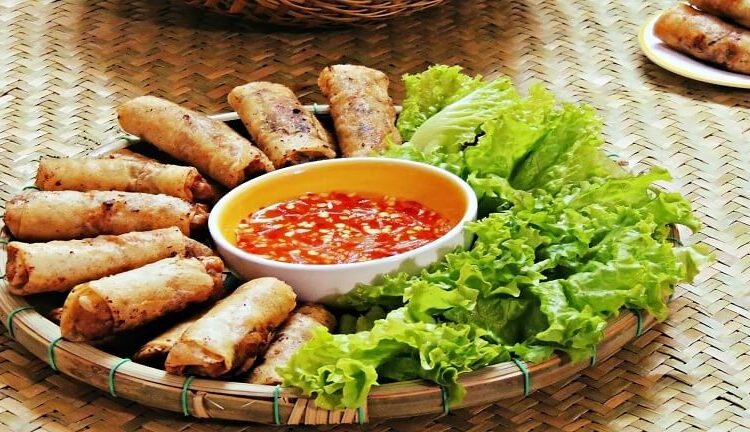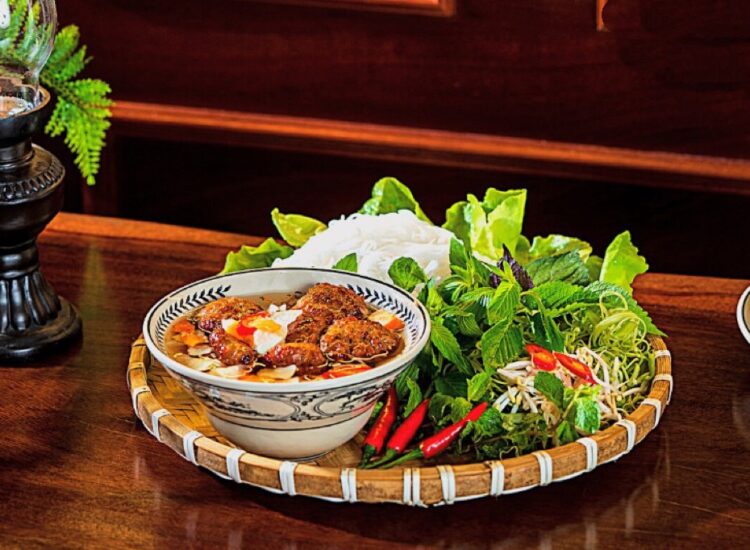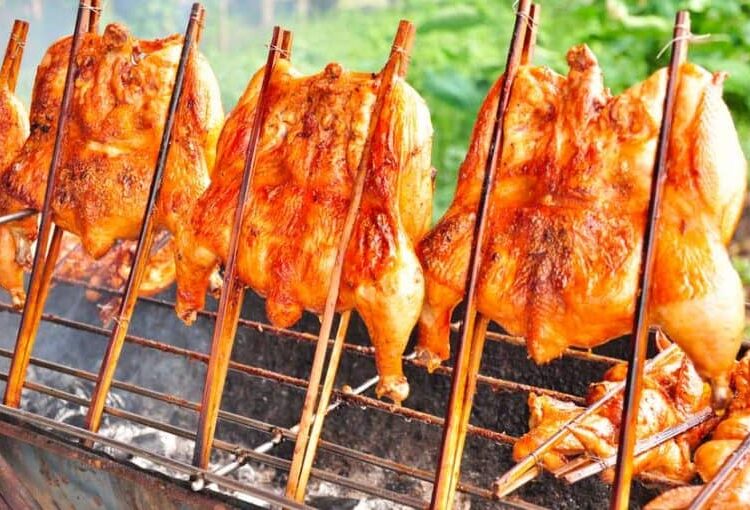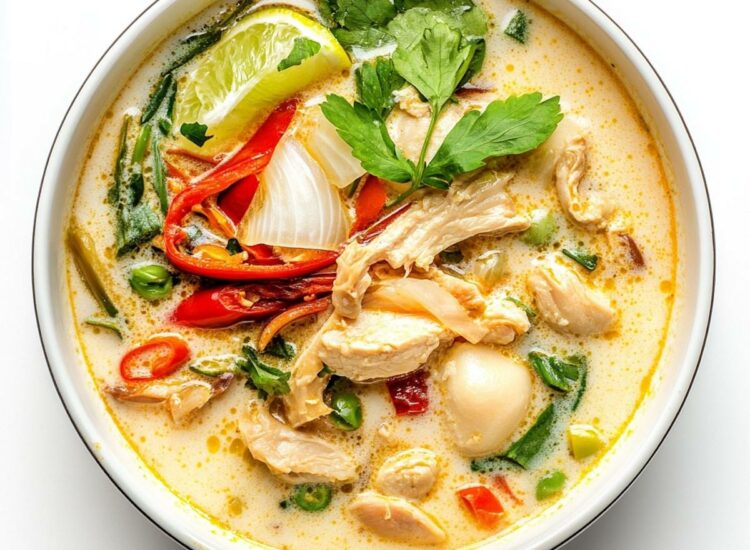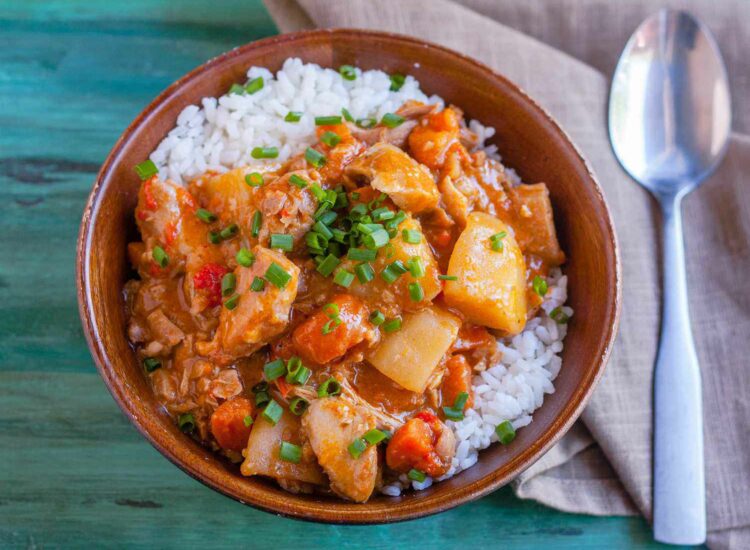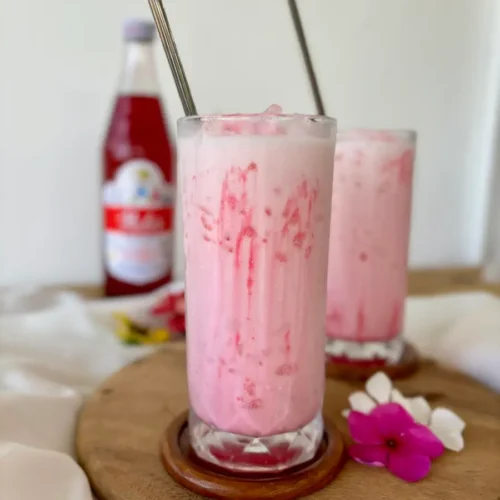Phat Kaphrao: The Ultimate Guide to Thailand’s Irresistible Basil Stir-Fry in 2025
In the vibrant tapestry of Thai cuisine, where aromatic herbs and bold flavors dance in perfect harmony, Phat Kaphrao, also known as Pad Krapow, stands out as a beloved and iconic dish. This fiery and fragrant basil stir-fry is a staple of Thai street food and restaurant menus alike, captivating locals and tourists with its irresistible blend of savory, spicy, and herbaceous notes. As we move into 2025, Phat Kaphrao continues to reign supreme as a culinary ambassador of Thailand, enjoyed around the globe and adapted to countless tastes. This comprehensive guide will explore everything you need to know about Phat Kaphrao, from its origins and variations to its authentic preparation and cultural significance, making you an expert on this quintessential Thai dish.
Toc [Hide]
- 1. 1. Unveiling Phat Kaphrao: A Deep Dive into Thailand’s Stir-Fry Sensation
- 2. 2. A Culinary Journey: The Origins and Evolution of Phat Kaphrao
- 3. Related articles 01:
- 4. 3. Phat Kaphrao at Home: Cooking Tips and Recipe
- 5. Related articles 02:
- 6. 4. Beyond the Plate: Phat Kaphrao’s Cultural Impact and Where to Find It

1. Unveiling Phat Kaphrao: A Deep Dive into Thailand’s Stir-Fry Sensation
Before we embark on a culinary journey to master the art of cooking Phat Kaphrao, it’s essential to understand the dish itself. What exactly is Phat Kaphrao, and what makes it so uniquely Thai and utterly addictive? Let’s delve into the core components and flavor profile that define this stir-fry sensation.
1.1 Defining Phat Kaphrao: Ingredients and Flavors
At its heart, Phat Kaphrao is a Thai stir-fry dish characterized by its aromatic holy basil (bai kaphrao) and a fiery blend of chilies. The word “Phat” (ผัด) in Thai means “stir-fry,” and “Kaphrao” (กะเพรา) refers to holy basil, the star ingredient that imparts the dish’s signature flavor. While variations exist, the classic Phat Kaphrao typically includes:
- Protein: Traditionally, minced pork (Moo Sap – หมูสับ) is the most common protein, but chicken (Gai – ไก่), beef (Nuea – เนื้อ), shrimp (Goong – กุ้ง), or tofu (Tao Hu – เต้าหู้) are also popular choices.
- Holy Basil (Bai Kaphrao – ใบกะเพรา): This is the defining ingredient. Holy basil, with its slightly peppery and anise-like flavor, is crucial for the authentic taste of Phat Kaphrao. It’s not to be confused with sweet basil (bai horapha) or Thai basil (bai manglak), which have different flavor profiles and are not suitable substitutes.
- Chilies: Fresh Thai chilies (Prik – พริก), typically bird’s eye chilies, provide the signature heat. The quantity can be adjusted to preference, from mild to intensely spicy.
- Garlic (Krathiam – กระเทียม): Garlic is essential for the aromatic base of the stir-fry.
- Soy Sauce (See Ew Khao – ซีอิ๊วขาว): Light soy sauce adds saltiness and umami.
- Fish Sauce (Nam Pla – น้ำปลา): Fish sauce is a cornerstone of Thai cuisine, adding a savory depth and umami richness that is essential for authentic flavor.
- Sugar (Nam Tan Sai – น้ำตาลทราย): A touch of sugar balances the savory and spicy elements.
- Oyster Sauce (Nam Man Hoi – น้ำมันหอย) (Optional): Oyster sauce adds a deeper savory flavor and a glossy sheen.
- Vegetables (Optional): While not traditionally included in classic Phat Kaphrao, some variations may include additions like green beans (Tua Fak Yao – ถั่วฝักยาว), onions (Hom Yai – หอมใหญ่), or bell peppers (Prik Yuak – พริกหยวก).
1.2 The Distinctive Taste Profile of Phat Kaphrao
The magic of Phat Kaphrao lies in its unique flavor profile, a harmonious blend of contrasting yet complementary tastes:
- Savory (Umami): The combination of soy sauce, fish sauce, and oyster sauce (if used) creates a deeply savory and umami-rich base that is incredibly satisfying.
- Spicy (Heat): Fresh Thai chilies deliver a fiery kick that can range from pleasantly warm to intensely hot, depending on the quantity used and personal preference.
- Herbaceous (Aromatic): Holy basil is the star, imparting a distinctive peppery, slightly anise-like, and almost minty aroma that is instantly recognizable and incredibly fragrant. This herbaceousness is what truly sets Phat Kaphrao apart.
- Salty: Soy sauce and fish sauce contribute saltiness, balanced by the sweetness of sugar.
- Slightly Sweet: A touch of sugar rounds out the flavors and prevents the dish from being overly salty or spicy.
The interplay of these flavors, combined with the wok hei (smoky wok aroma) from stir-frying over high heat, creates a complex and deeply satisfying dish that is both comforting and exciting to the palate. Phat Kaphrao is not just about heat; it’s about the balance and interplay of all these elements, resulting in a truly addictive culinary experience.
2. A Culinary Journey: The Origins and Evolution of Phat Kaphrao
While Phat Kaphrao feels like a timeless classic, its history is surprisingly more recent than some might imagine. Understanding its origins and evolution sheds light on how this dish became such a beloved staple of Thai cuisine and how it continues to adapt and evolve today.
2.1 Tracing the History of Phat Kaphrao
Unlike ancient Thai dishes with centuries-old roots, Phat Kaphrao is believed to have emerged relatively recently, likely in the mid-20th century. Food historians suggest it originated in central Thailand, possibly in the Bangkok region, during a period of increasing Chinese culinary influence and the availability of new ingredients.
- Chinese Stir-Fry Influence: The stir-frying technique itself is undoubtedly influenced by Chinese cooking methods, which have long been integrated into Thai cuisine. The use of a wok and high heat stir-frying is a clear indication of this influence.
- Introduction of Oyster Sauce: Oyster sauce, a key ingredient in many modern Phat Kaphrao recipes, is also a relatively recent introduction to Thai cuisine, becoming more widely available in the mid-20th century. Its inclusion likely contributed to the dish’s savory depth.
- Adaptation to Local Tastes: While stir-frying techniques and some ingredients may have been inspired by Chinese cuisine, Phat Kaphrao is distinctly Thai due to its emphasis on bold flavors, the generous use of chilies, and, most importantly, the prominent role of holy basil, a herb native to the region and deeply ingrained in Thai culinary traditions.
- Street Food Origins: Phat Kaphrao quickly gained popularity as a street food dish, likely due to its quick cooking time, affordability, and intensely satisfying flavors. Street vendors could efficiently prepare it in woks over portable stoves, serving it quickly and readily to hungry customers.
2.2 Regional Variations and Modern Adaptations of Phat Kaphrao
While the core elements of Phat Kaphrao remain consistent, regional variations and modern adaptations have emerged over time, reflecting the diverse tastes and culinary creativity within Thailand and beyond.
1. https://chobangkaewthai.com/bun-cha-a-culinary-journey-into-vietnams-iconic-grilled-pork-and-noodles
2. https://chobangkaewthai.com/cha-yen-delicious-drinks-from-tea-leaves
3. https://chobangkaewthai.com/penang-curry
4. https://chobangkaewthai.com/thai-whisky-the-essence-of-sugarcane
5. https://chobangkaewthai.com/kai-yang-the-ultimate-guide-to-thai-grilled-chicken
- Protein Variations: As mentioned earlier, while minced pork is classic, chicken, beef, shrimp, and tofu are widely accepted and popular alternatives. Some regions or restaurants might even offer more adventurous protein options like seafood or duck.
- Vegetable Additions: While purists might argue against it, the inclusion of vegetables like green beans, onions, or bell peppers is increasingly common, especially in restaurant versions catering to Western palates or those seeking a more balanced meal.
- “Phat Kaphrao Gai Sap Kai Dao” (ผัดกะเพราไก่สับไข่ดาว): This is an incredibly popular variation where Phat Kaphrao with minced chicken is served with a fried egg (Kai Dao – ไข่ดาว) on top. The runny yolk adds richness and creaminess to the spicy stir-fry.
- “Phat Kaphrao Moo Krob” (ผัดกะเพราหมูกรอบ): Another indulgent variation features crispy pork belly (Moo Krob – หมูกรอบ) instead of minced pork, adding a delightful textural contrast and even more savory flavor.
- “Phat Kaphrao Nuea Sap” (ผัดกะเพราเนื้อสับ): Using minced beef (Nuea Sap – เนื้อสับ) instead of pork or chicken offers a different flavor profile, often with a richer and more robust taste.
- Fusion and Western Adaptations: Outside of Thailand, Phat Kaphrao has been adapted to suit local tastes and ingredient availability. Some fusion versions might incorporate different vegetables, sauces, or even non-traditional proteins. While these adaptations can be interesting, purists often argue that they deviate too far from the authentic essence of Phat Kaphrao.
Despite these variations, the defining characteristics of Phat Kaphrao – the holy basil, chilies, savory sauce, and stir-fried technique – remain central to its identity.
3. Phat Kaphrao at Home: Cooking Tips and Recipe
Now that you understand the essence of Phat Kaphrao, it’s time to bring this iconic Thai dish into your own kitchen. Cooking Phat Kaphrao at home is surprisingly straightforward and rewarding, allowing you to customize the spice level and ingredients to your liking.

3.1 Essential Ingredients for Authentic Phat Kaphrao
To create truly authentic Phat Kaphrao, sourcing the right ingredients is crucial. Here’s a checklist of essential ingredients and where to find them:
- Holy Basil (Bai Kaphrao – ใบกะเพรา): This is non-negotiable. Look for holy basil at Asian grocery stores. It has slightly serrated leaves and a purplish stem. Sweet basil or Thai basil are not substitutes. If you absolutely cannot find holy basil, you might consider using Italian basil as a very last resort, but the flavor will be significantly different.
- Thai Chilies (Prik – พริก): Bird’s eye chilies are commonly used. Adjust the quantity based on your spice preference. You can find these at Asian grocery stores or sometimes in well-stocked supermarkets.
- Fish Sauce (Nam Pla – น้ำปลา): Choose a good quality fish sauce. Look for brands from Thailand or Vietnam. Fish sauce is essential for the authentic savory flavor.
- Light Soy Sauce (See Ew Khao – ซีอิ๊วขาว): Use light soy sauce, not dark soy sauce, for this dish.
- Oyster Sauce (Nam Man Hoi – น้ำมันหอย): While optional for purists, oyster sauce adds a significant depth of flavor and is highly recommended for a restaurant-style Phat Kaphrao.
- Protein of Choice: Minced pork, chicken, beef, shrimp, or tofu – choose your favorite. For minced pork, you can buy pork shoulder and mince it yourself or buy pre-minced pork.
- Garlic and Shallots: Fresh garlic and shallots are essential aromatics.
- Vegetable Oil: Use a neutral oil suitable for high-heat stir-frying, such as vegetable oil, canola oil, or peanut oil.
- Jasmine Rice (Khao Hom Mali – ข้าวหอมมะลิ): Serve Phat Kaphrao with steamed jasmine rice, the classic accompaniment.
- Fried Egg (Kai Dao – ไข่ดาว) (Optional): For “Phat Kaphrao Gai Sap Kai Dao,” prepare fried eggs with crispy edges and runny yolks.
3.2 Step-by-Step Phat Kaphrao Recipe and Cooking Techniques
Here’s a step-by-step recipe for making authentic Phat Kaphrao at home:
Yields: 2 servings Prep time: 15 minutes Cook time: 10 minutes
Ingredients:
- 1 tablespoon vegetable oil
- 2 cloves garlic, minced
- 2-3 Thai bird’s eye chilies, finely chopped (adjust to taste)
- ½ cup minced protein (pork, chicken, beef, shrimp, or tofu)
- 1 tablespoon fish sauce
- 1 tablespoon light soy sauce
- 1 teaspoon oyster sauce (optional)
- 1 teaspoon sugar
- 1 cup holy basil leaves
- Steamed jasmine rice, for serving
- Fried egg (Kai Dao), optional, for serving
Equipment:
- Wok or large skillet
- Cutting board
- Knife
- Spatula
Instructions
Get Started:
1. https://chobangkaewthai.com/oliang-thai-coffee-you-shouldnt-miss
2. https://chobangkaewthai.com/thai-whisky-the-essence-of-sugarcane
3. https://chobangkaewthai.com/a-journey-through-time-unraveling-the-history-of-massaman-curry
4. https://chobangkaewthai.com/thai-beer-the-drink-that-beats-summer-fatigue
5. https://chobangkaewthai.com/kai-yang-the-ultimate-guide-to-thai-grilled-chicken
- Prepare Ingredients: Mince garlic and finely chop chilies. If using minced pork, ensure it’s ready. Wash and dry holy basil leaves. Prepare sauces and sugar.
- Heat Wok: Heat vegetable oil in a wok or large skillet over high heat until smoking hot.
Stir-Fry:
- Aromatics: Add minced garlic and chilies to the hot wok and stir-fry for about 30 seconds until fragrant, being careful not to burn the garlic.
- Protein: Add minced protein to the wok and stir-fry, breaking it up with a spatula, until cooked through and slightly browned.
- Sauces and Sugar: Add fish sauce, light soy sauce, oyster sauce (if using), and sugar to the wok. Stir-fry to combine and coat the protein evenly.
- Holy Basil: Add holy basil leaves to the wok and stir-fry for just 15-30 seconds until the basil is wilted and fragrant. Do not overcook the basil, as it loses its flavor quickly.
Serve:
- Serve Immediately: Remove Phat Kaphrao from the wok and serve immediately over steamed jasmine rice. Top with a fried egg (Kai Dao), if desired.
Tips for Perfect Phat Kaphrao:
- High Heat is Key: Phat Kaphrao is best cooked over very high heat to achieve wok hei and quickly cook the ingredients.
- Don’t Overcook Basil: Add holy basil at the very end and stir-fry briefly to wilt it and release its aroma. Overcooked basil loses its flavor.
- Adjust Spice Level: Start with fewer chilies and add more to taste. You can also remove seeds from chilies to reduce heat.
- Taste and Adjust Seasoning: Taste and adjust seasoning as needed. You might want to add a bit more fish sauce for saltiness or sugar for sweetness, depending on your preference.
- Serve Hot and Fresh: Phat Kaphrao is best enjoyed immediately while it’s hot and fragrant.
4. Beyond the Plate: Phat Kaphrao’s Cultural Impact and Where to Find It
Phat Kaphrao is more than just a delicious meal; it’s deeply woven into Thai culture and daily life. From bustling street food stalls to upscale restaurants, Phat Kaphrao is ubiquitous and enjoyed by people from all walks of life.
4.1 Phat Kaphrao in Thai Culture and Beyond
Phat Kaphrao holds a special place in Thai culinary culture for several reasons:
- Comfort Food Staple: It’s a quintessential Thai comfort food, readily available, affordable, and satisfying. Thais often eat Phat Kaphrao for lunch or dinner, and it’s a popular choice for a quick and delicious meal.
- Street Food Icon: Phat Kaphrao is a cornerstone of Thai street food culture. You’ll find countless street vendors and food stalls throughout Thailand wok-frying Phat Kaphrao with its signature aroma wafting through the air.
- Restaurant Menu Must-Have: No Thai restaurant menu is complete without Phat Kaphrao. It’s a dish that both locals and tourists expect to find and enjoy.
- Symbol of Thai Flavors: Phat Kaphrao embodies the bold and balanced flavors that define Thai cuisine – spicy, savory, sweet, and herbaceous. It’s a perfect representation of Thai culinary artistry.
- Global Popularity: Phat Kaphrao has transcended Thai borders and gained immense popularity worldwide. Thai restaurants globally feature Phat Kaphrao on their menus, and it’s increasingly recognized and enjoyed by food lovers around the world.
4.2 Finding the Best Phat Kaphrao: From Street Food to Restaurants
To truly experience Phat Kaphrao, you need to know where to find the best versions. Here’s a guide to seeking out delicious Phat Kaphrao:
- Street Food Stalls: For the most authentic and often most flavorful Phat Kaphrao, head to street food stalls in Thailand. Look for stalls with a busy wok station, fresh ingredients, and a line of locals – these are usually good signs. Street food Phat Kaphrao is often cooked with intense heat and a generous hand, resulting in a truly satisfying and fiery experience.
- Local Thai Restaurants: Most local Thai restaurants, both in Thailand and internationally, will serve Phat Kaphrao. Look for restaurants that specialize in authentic Thai cuisine and have good reviews. Don’t be afraid to ask for “Phat Kaphrao Thai style” (Phat Kaphrao Baep Thai – ผัดกะเพราแบบไทย) if you want a more traditional and spicier version.
- “Ran Khao Gaeng” (ร้านข้าวแกง): These are Thai curry and rice shops, and they often serve Phat Kaphrao as one of their ready-made dishes. “Ran Khao Gaeng” are a great option for a quick and affordable Phat Kaphrao meal.
- Cook It Yourself: As you’ve learned from the recipe, making Phat Kaphrao at home is entirely achievable. Sourcing fresh holy basil is key, but once you have the ingredients, you can enjoy delicious Phat Kaphrao whenever you crave it.
Conclusion:
Phat Kaphrao is more than just a stir-fry dish; it’s a culinary icon that captures the essence of Thai flavors and the spirit of Thai street food culture. From its humble origins to its global popularity, Phat Kaphrao continues to delight and satisfy with its irresistible blend of savory, spicy, and herbaceous notes. Whether you’re enjoying it from a bustling street stall in Bangkok or cooking it in your own kitchen, Phat Kaphrao is a dish that truly embodies the magic of Thai cuisine and will undoubtedly remain a beloved favorite for years to come in 2025 and beyond.

